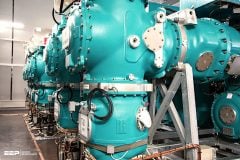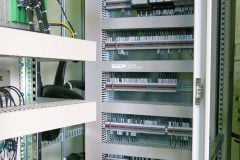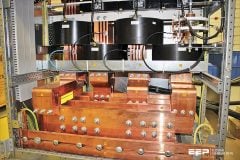
Construction & Amperage
A socket outlet is a female socket connected to the power wiring in the building and will accept the male plug attached at the end of the flexible cord of an appliance such as a vacuum cleaner, electric fire or electronic equipment.
In the case of socket outlets the front plate is usually integral with the outlet. In Great Britain the majority of socket outlets intended for domestic or commercial use are BS 1363 sockets, and are designed to accept 13A plugs. These plugs have three rectangular pins and the sockets have three corresponding rectangular slots to take the pins.
Each plug also has a fuse inside it, so that each appliance has its own fuse at the feeding end of its flexible cable or cord. This protects the cable or cord, and the fusing arrangements of the building wiring need protect only the permanent fixed wiring of the building.
However, there may be older installations still in existence and plugs and sockets for use with them are still being manufactured. The older fittings, all have round pins and sockets. They are rated at 2A, 5A and 15A. The 15A pattern is still used in the Republic of South Africa. The spacing of the pins and sockets are different for the different ratings.
This makes sure that a plug of one rating cannot be inserted, even wilfully, into a socket of a different rating. Plugs and sockets rated at 2 and 5A are available in both two and three-pin versions, but those of 15A-rating are made only with three pins.
The smallerrated sockets are useful in situations where switching of reading lamps is required.
Two of the three pins are for the line and neutral cables, and the third one is for a separate circuit protective conductor.The sockets are installed around the room in suitable locations, and a wall switch at the doorway controls the lighting socket circuit. The reading lamps are then all turned on together.

It should be noted that although a separate circuit protective conductor was not always provided on many older installations, it is essential with all present-day methods of wiring buildings.
Typical socket outlets are illustrated in Figure above. It will be seen that they are available with and without switches. Unswitched sockets have the contacts permanently connected to the wiring and are, therefore, permanently live. The appliance to be connected is turned on as soon as the plug is pushed into the socket, and is disconnected when the plug is pulled out.
If, however, a switch is incorporated in the socket outlet, the switch must be turned on before the line contact becomes connected to the supply. The switch mechanisms built into socket outlets for this purpose are of the same type as those used for lighting switches. It is possible to leave a plug half in and half out of a socket so that on older types of plug, parts of the bare pins are left exposed.
If the socket is permanently live the exposed part of one of the pins is live and in this half-way position it could be touched by a small finger or a piece of metal. Newer types of plug have the rear end of the pins insulated so that the problem with older types of plug top has been alleviated.
Also if an appliance connected to the plug is faulty and takes an excessive current arcing can occur as the plug is pushed in and out.
These hazards are avoided if the socket is not switched on until after the plug has been pushed in. Of course there is nothing to stop a householder switching the socket on first and pushing the plug in afterwards, and in fact many people do this. The switched socket outlets in a house are then left permanently switched on, so that the advantage of a switch is lost.
However, people will not learn to use equipment properly if they are not provided with it, and it may perhaps be regretted that unswitched sockets are made at all.
A further refinement to a socket outlet is the addition of a neon indicator light which shows when the socket is switched on. This can be reassuring to mechanically minded people who find electricity difficult and feel happier if something visible happens when a switch is turned on.
It is also convenient for seeing at a glance whether it is the power supply that has failed or the appliance connected to the plug, which has developed a fault.
Like switches, socket outlets can be recessed into a wall with the front flush with the face of the wall or they can be mounted completely on the surface. The socket outlets illustrated in Figure 1.5 are of both types.
How To Wire Wall Sockets (VIDEO)
Cant see this video? Click here to watch it on Youtube.
Resource: Design of Electrical Services for Buildings – Barrie Rigby (Get it from Amazon)











In the picture of plugs is one “Big Fail”.
Europe plugs with earthing pin are signed only how a “FRENCH Style” and NO “FRENCH Style SCHUKO”.
Description “SCHUKO” means SCHUTZKONTAKT from GERMAN language and technical meaning.
Diferent between “FRENCH STYLE” and SCHUKO is that you can’t “mixing” this type between themselfs. Only in version of plug CEE 7/7 its this possible.
SCHUKO plugs have always lower IP protection how FRENCH style and also you can reversing the Line and Neutral potential and from this reason is SCHUKO unsafely than FRENCH style plugs.
Please give me the different between switch socket and socket outlet
Are they any standards which says about the application or usage area of switched & Unswitched socket outlet ?
Nice article.
Switched sockets are definitely safer and provide a level of control to the user. North American sockets don’t provide earthing which I find unsafe to some level especially to the appliance and the terminals are always live unlike the UK sockets that get open when the earth is plugged in. Can you comment on smart socket?
Sure, I agree with you. Socket without earthing is pretty unsafe. You’ll never know what consumer you will plug into it.